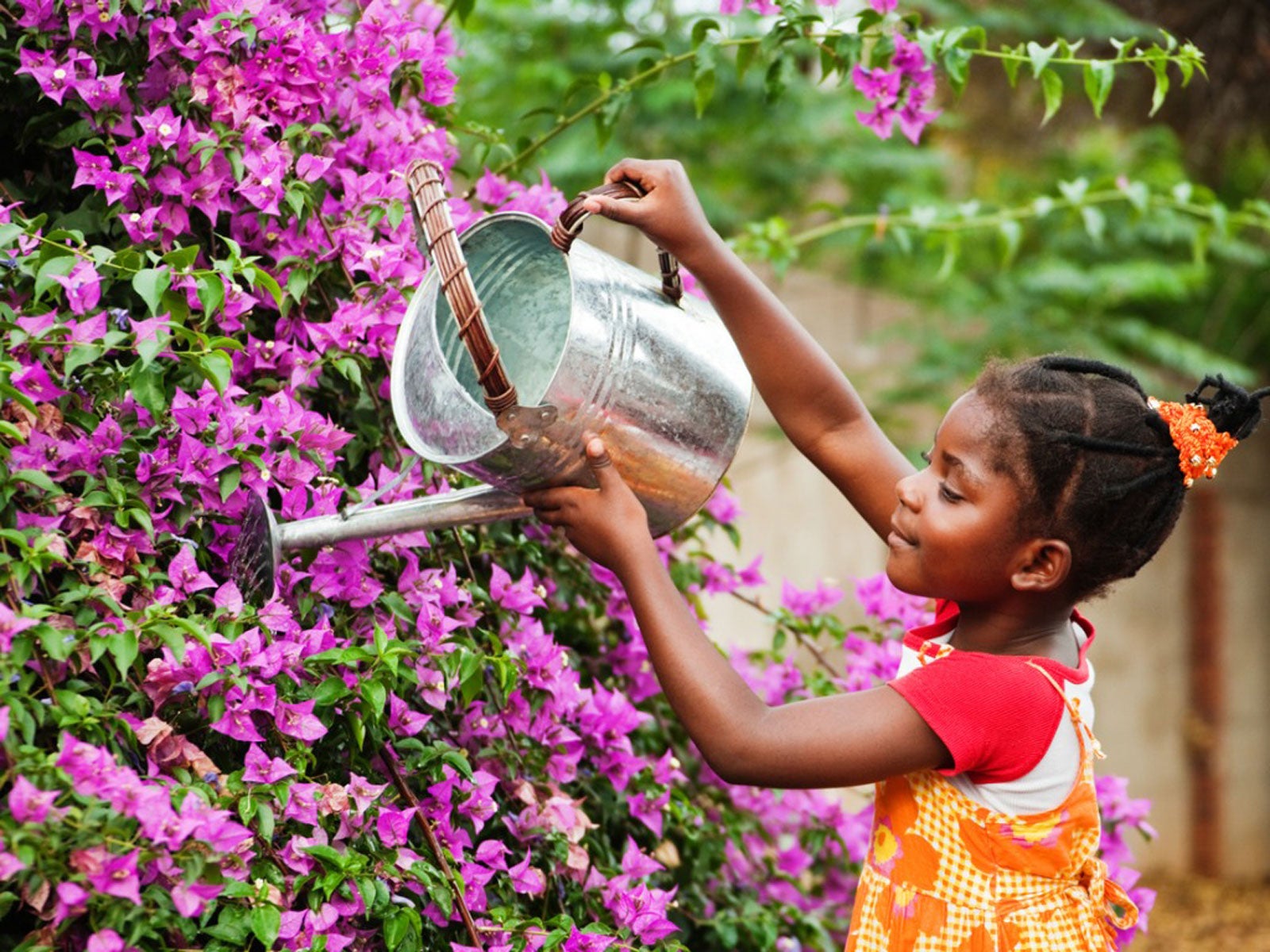Flower Watering Tips: A Guide To Watering Flowers


Even the most seasoned gardeners can benefit from a quick guide to watering flowers. If you’re new to growing flowers; however, understanding how to water them correctly can make the difference between success with thriving blooms and failure, or dead plants.
How Much Water Do Flowers Need?
Watering gardens of any kind is important. Knowing how to water flowers correctly begins with the basics, how much water they actually need to grow and thrive. A good general rule to follow for most flowers is one inch (2.5 cm.) of water every seven to ten days. This is just for the growing season, though, as many flowers need less during the dormant part of the year.
One inch (2.5 cm.) of water is approximately five gallons (23 L.) of water per square yard of soil. If you are watering flower beds, you can put on a sprinkler and leave open canisters out to catch the water. This will let you know how long the sprinklers need to be on for one inch (2.5 cm.) of water to accumulate.
Of course, there are many exceptions to this general rule. Plants in hot, dry conditions may need more. For outdoor plants, when it’s raining, you shouldn’t need to provide any supplemental water.
Flower Watering Tips
Once you have a handle on how much water your flowers need, you can consider how and when to water flowers. Take soil type into account, for instance. If your soil drains very well and quickly, water about a half inch (1 cm.) twice a week to ten days. If the soil drains more slowly, one watering is better.
Water native species less. When growing native flowers or wildflowers, you won’t need to water them once they have become established. Keep top layers of soil moist. For most flowers, you don’t want to let the top inch (2.5 cm.) or two (5 cm.) of soil to dry out completely.
Just as with vegetable gardens, the best time of day to water outdoor flowers is in the morning. With cooler temperatures, more water will soak into the soil and less will evaporate.
Gardening tips, videos, info and more delivered right to your inbox!
Sign up for the Gardening Know How newsletter today and receive a free copy of our e-book "How to Grow Delicious Tomatoes".
Invest in drip irrigation. An issue with watering flowers with sprinklers or a hose is disease spread. The water causes soil to splash up to leaves and this can spread fungal and other infections. A drip irrigation system is a good investment for keeping plants watered without this risk.
Add mulch. If you have a hard time keeping moisture in your soil and want to water a little less frequently, add a layer of mulch. This reduces evaporation and maintains soil moisture.

Mary Ellen Ellis has been gardening for over 20 years. With degrees in Chemistry and Biology, Mary Ellen's specialties are flowers, native plants, and herbs.